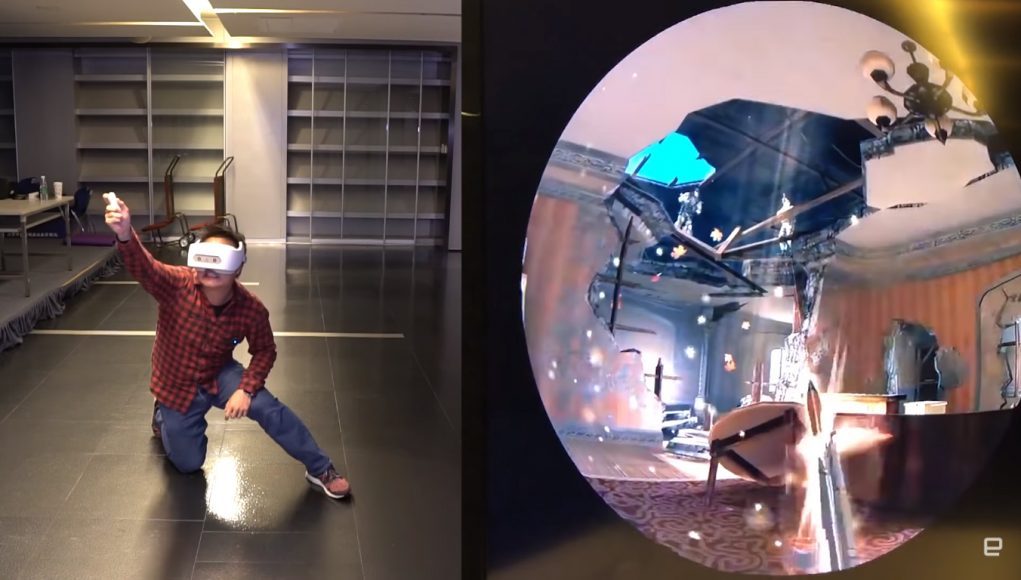Vive Focus, the first consumer-available standalone headset with six-degrees-of-freedom (6DoF) positional tracking, has officially launched in China. While HTC isn’t shipping Vive Focus outside the country, fresh reports of the headset’s tracking capability seem to be promising.
Richard Lai, Engadget China’s Senior Editor-in-Chief, got a chance to go hands-on with Vive Focus recently, saying the headset’s ‘World Scale’ tracking technology was “quite impressive.” For testing purposes, Lai got down on the ground for a tense fire fight in Kukrgame’s Mercenary: The Italian Ops shooting game, and even did a few cartwheels in efforts to throw off the headset to no avail.
This wasn’t Lai’s first time trying the headset though. He got a chance to play with a pre-production prototype back in November where he noticed some hitches due to poorly-optimized games that noticeably reduced the headset’s tracking capabilities. Now Lai reports that many of the demos he tried perform “quite well” in their current state.
Lai says he had to get used to the Vive Focus’ 3DoF controller, but “still managed to enjoy this slightly odd shooting sensation.”
We haven’t found any more English-language hands-on videos of the latest model besides Engadget’s, but we’ll keep our eyes open in the coming weeks.
While reporting in Japanese, our friends over at MoguraVR got a chance to try on the pre-production headset, which although has since been improved in build quality, maintains the same basic ergonomic strap system as the current version. The gif below shows how to adjust the head strap for a tight fit.
[gfycat data_id=”WhoppingImportantArchaeopteryx”]
Vive Focus packs a Qualcomm Snapdragon 835 mobile processor, a 2,880 × 1,600 AMOLED display (75 Hz refresh rate) with a 110-degree field of view. The headset is kept cool by an internal fan, and powered by a battery that provides up to three hours of game time. The headset has a number of what we’d call ‘premium’ features, including IPD adjustments, USB-C ‘fast charging’ port, microSD slot, headphone jack, head-mounted volume rocker, and integrated stereo speakers.
HTC previously told us Vive Focus is using its own ‘World Scale’ positional tracking algorithm—not to be confused with Google’s ‘WorldSense’ tracking. Up until HTC announced it would no longer be shipping its headset outside of China, it was assumed the company would use both Google’s Daydream app store and ‘WorldSense’ tracking. Now, the China-bound headset runs the company’s own ‘open source’ API Vive Wave and a mobile version of the Viveport store.
Vive Focus is available for pre-order now starting at around $600 from Vive’s China-facing site. Pre-orders go until January 12th, with expected shipping date some time in January.







